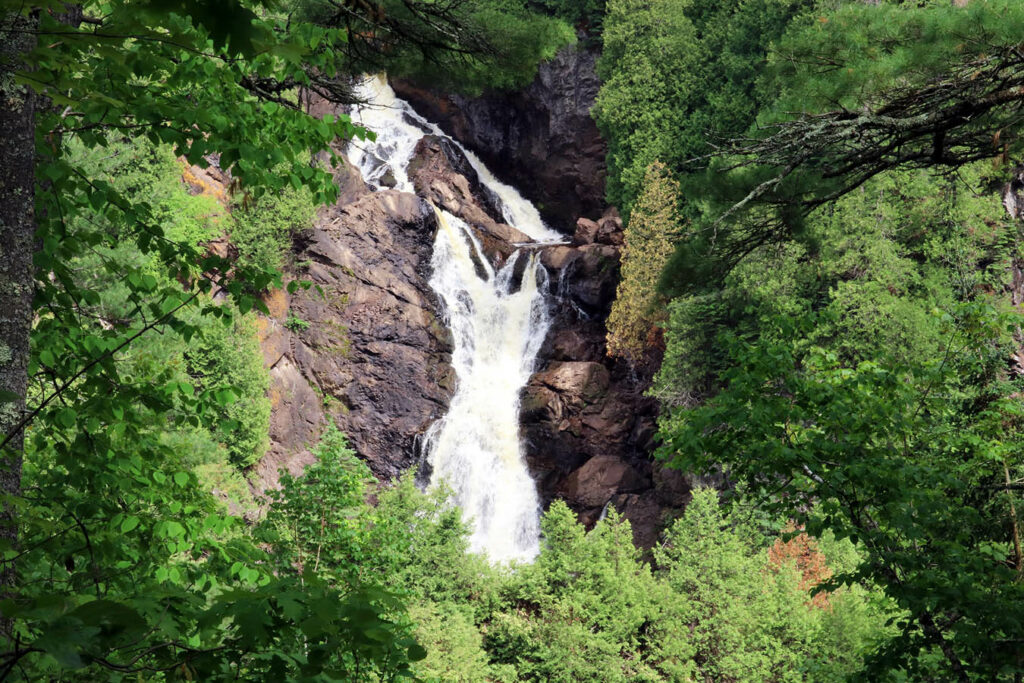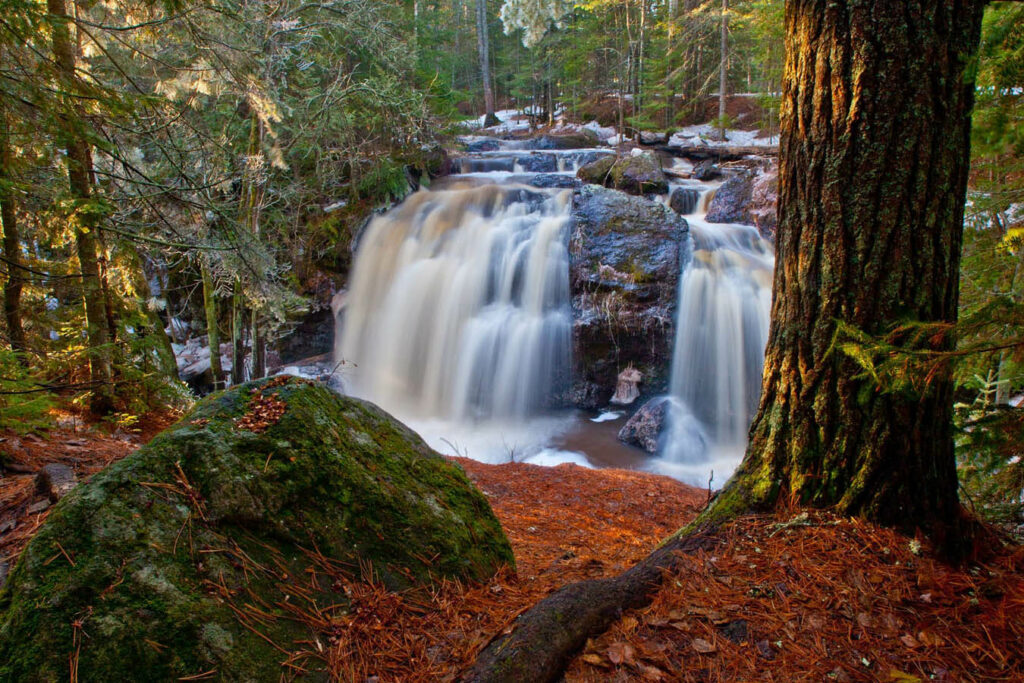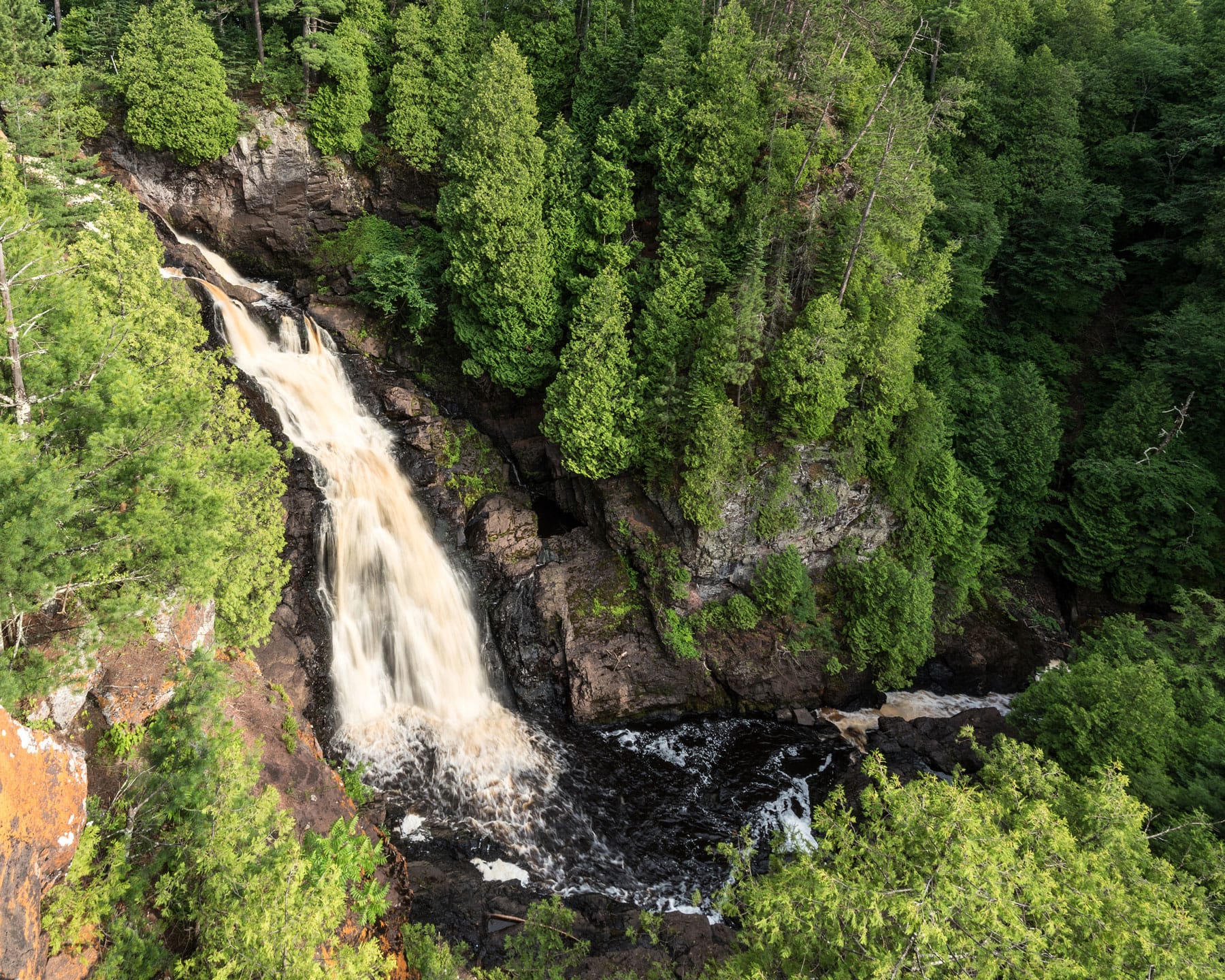Waterfall enthusiasts know it’s “that time.” As late winter warms into early spring, thousands of acres of snowpack from a record year for snowfall is melting. The record snowfall is sending a rush into local rivers and surging down Wisconsin’s largest and most scenic waterfalls.
It’s not just the 139+ inches of snowfall that’s been recorded this winter, but an unusually deep snowpack with exceedingly high water density, according to meteorologists with the National Weather Service (NWS) in Duluth, Minn., that’s packing a punch. That combination, with warm weather in the forecast, means the gushing has begun, with gusto. For waterfallers, April is when the show gets going and May should keep the party flowing.
Where to go
Most of Wisconsin’s 100 waterfalls, and the most dramatic, are found up north for good reason. There’s a higher elevation near Lake Superior, which got its name on account of being literally above the rest of the Great Lakes.
Here are some of the best to see:
1. Wisconsin’s Biggest Deal: Big Manitou Falls

At 165 feet high, Big Manitou Falls in Pattison State Park offers plenty to gush about. The highest waterfall in Wisconsin and the fourth highest east of the Rocky Mountains, Big Manitou plunges down the ancient rocky slopes of the unique Black River gorge. Some call it the Midwest’s Niagara Falls, because it’s just as tall. But the name Manitou comes from Native Americans who heard the voice of the Great Spirit in the roaring of the falls — calling it “Gitchee Manitou.” Accessible trails from nearby parking lots lead to viewing platforms on both sides of the gorge. For a little more adventure, take trails down to the bottom of the river gorge for a whole different perspective.
No matter the season, this is a must-stop for waterfall lovers. Trails lead two miles upstream to the intimate Little Manitou Falls. For an even shorter walk to the 30-foot-tall falls, drive down the road to the dedicated parking area nearby. The 1,400-acre Pattison State Park has a network of scenic trails, as well as a lake with a beach, nature center and camping. Find it 15 minutes south of Superior on Hwy 35.
2. Idyllic and accessible: Amnicon Falls

Named one of Wisconsin’s most treasured state parks, Amnicon Falls State Park is a four-season spot to picnic, camp, hike and even take a summer dip in or near some of the meandering falls. And waterfalling is the main attraction. Here, people easily view idyllic waterfalls and rapids along the Amnicon River from a famous, covered footbridge and nearby trails. It feels remote but is just a 15-mile drive from Superior and 18 miles from Pattison State Park.
The scenic park features four named waterfalls on the Amnicon River: Upper, Lower, Snake Pit, and Now and Then Falls. Plus, explorers can find several unnamed waterfalls and a stretch of roaring rapids. With so much, so close, within easy hiking distance, Amnicon is widely considered one of the most accessible waterfall areas in the Midwest.
- Upper Falls and Lower Falls: the main attractions, these falls occur where the river’s main channel rumbles over a pair of 20-foot high cascades, one after the other, with the lower ending in a sandstone canyon surrounded by pines.
- Snake Pit Falls: more intimate, these falls occur where a small branch forks from the Amnicon River and flows over two narrow ledges into a narrow rocky gorge. It’s the highest waterfall in the park, but gets less flow than the Upper Falls. The spring snowmelt, of course, changes that impression.
- Now and Then Falls: the smallest of the falls, it’s formed as a small branch of the Amnicon River that only flows when river levels are high.
Spring 2023 is special
With deep snow on the ground, late in the season, rivers are poised to run fast and high as temperatures warm fast.
Pattison State Park ranger station observers recorded record snow this season, and the snow depth of 28” in April is an all-time record, said Ketzel Levens, NWS Duluth meteorologist. With temperature highs in the 50s and 60s forecasted, he said rivers are expected to begin rising and gaining flow, meaning signs of the spring gush could begin in mid-April. But with so much snow to melt, and the possibility of cooler temps at the end of April, waterfall season could be drawn out well into May.
A word of caution for those who go out on trails and try to get close, prepare for late winter and early spring conditions in the woods.
“Waterfall season is truly awesome, but can be dangerous,” Levens noted. “Trails around rivers are likely to still be snow and ice-covered, and river flows very high. I would encourage folks to observe from a safe distance, and keep a close eye on kids and pets. Use caution as slippery rocks, cliffs, deep pools and strong currents are very common around waterfalls. Additionally, river flow is generally maximized after peak daily heating, so river flows will be highest in the evening and very early morning. Long story short: don’t underestimate the power of water!”
A Superior location
People who love the sight of cascading falls and the thundering power of Mother Nature on full display can take it all in just a few miles from Superior, home to some of Wisconsin’s most famous and favored spots for waterfalling—in addition to the drama of Lake Superior and the St. Louis River Estuary.
“Superior’s outdoor opportunities are pretty wild and amazing—with the greatest of the Great Lakes, with mighty rivers like the Brule that attracted US presidents, with some of the only remaining boreal forests in Wisconsin,” said Rebecca Scherf, chief of staff for the city of Superior. “People come here all year long for affordable lodging, historic character and a really fun time. But right now, whether you’re an active explorer or just want some unforgettable sightseeing, this is go time.”
Find lodging for your trip
Superior has a wide variety of accommodations and great rates to boot. Find lodging for your waterfall excursion.

